Salome is a big, big sing and happily, Des Moines Metro Opera has engaged a big, big star.
“Dazzling” is too puny an adjective to describe Sara Gartland for her overwhelming achievement in the punishing title role. Ms. Gartland has often enriched past DMMO productions, in parts of increasing dramatic and vocal demands. Her captivating Salome draws on all her past strengths and has laser focused them into this definitive, unrivaled portrayal.
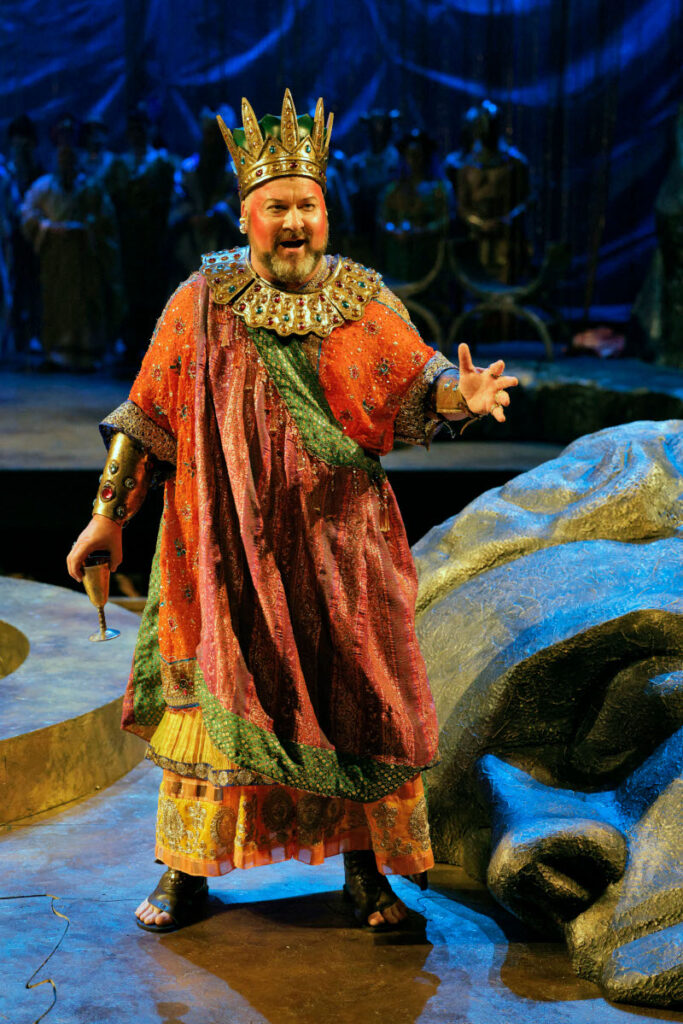
Ms. Gartland is possessed of a substantial, richly pointed soprano that is strikingly even in all registers and at all volumes. Her coy, playful pleadings to various men in her orbit are sweetly lyric one moment but can turn on a dime the next, morphing effortlessly into secure laser-like rebukes dripping with agitated vitriol. She paced her delivery with uncommon skill, and successfully blossomed into the fullest voiced phrases with tireless beauty of tone, and ample dramatic weighting.
It is almost too much to hope that any Salome who can so successfully sing the part, can also remotely cut the proper figure as a troubled teenager, but here too, Ms. Gartland proved to be in a league of her own. Nowhere was this more evident than when she had changed into her scanty Dance of the Seven Veils bikini, her lithesome, girlish figure instantly transforming the piece into Salome: The Swimsuit Edition. For her completely alluring physique du role, spectacular vocal gifts, and theatrical acumen, there is no finer Salome in the world right now than Sara Gartland.
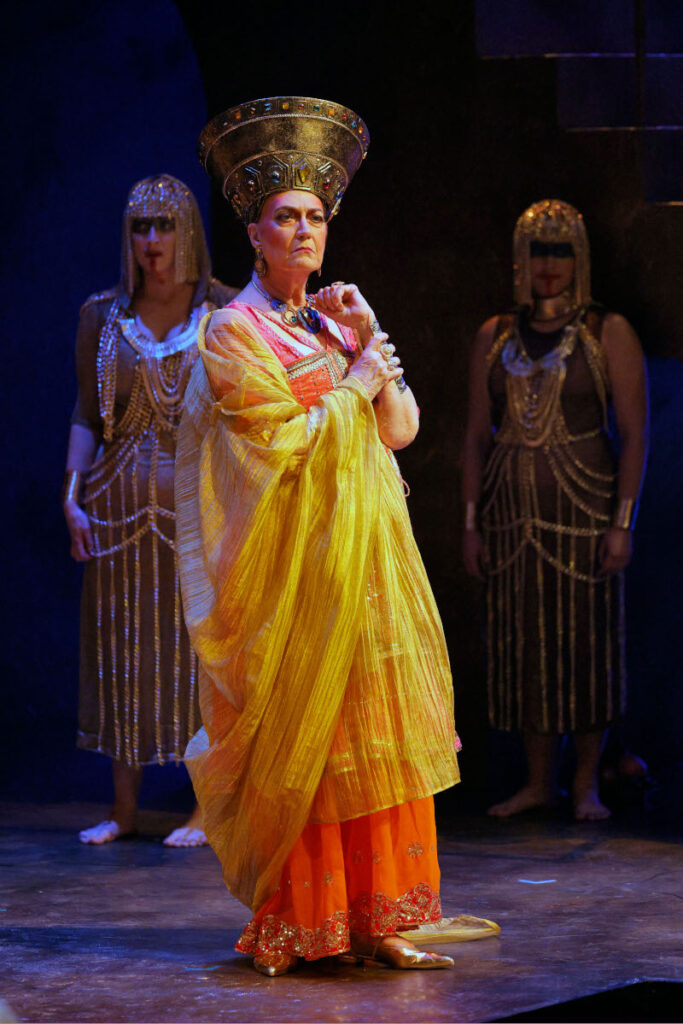
Vocally, she was matched note for note by the overwhelming Jochanaan of Norman Garrett, whose stupendous Heldenbariton proved an unstoppable force that pinned back our ears in awesome admiration. Mr. Garrett also appeared born to the stage and was able to inhabit every phrase, even confined as he was to a central platform. His select gesturing was wedded to the moment, and his vocal and theatrical stature was worthy of a prophet.
He proved equally adept with more measured, serene singing such as when presaging Jesus’ public life, and he colored those moments with unearthly beauty and sheen. I have never heard Jochanaan’s offstage pronouncements and exhortations to better effect than from Mr. Garrett.
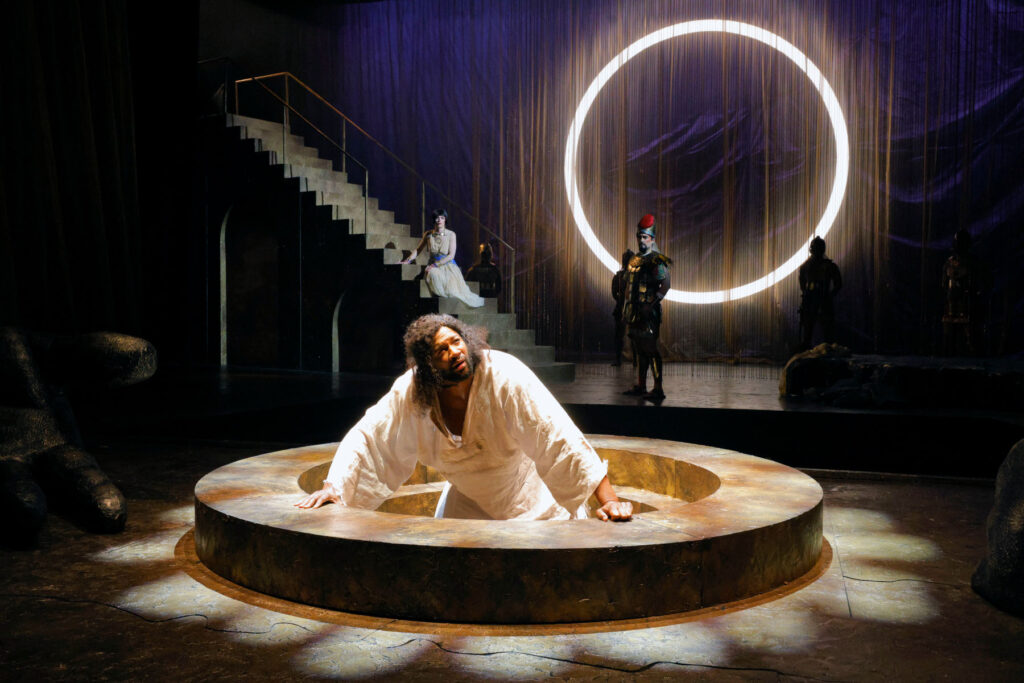
Herod is a tricky part and can be a temptation to become a tenor’s later career indulgence, “acted” and “barked” more than sung. Well, Chad Shelton was having none of that, and this established artist sang the part with brilliant luster and arching line, while relishing his controlled descent into a debauched, demented mid-life crisis fueled by wine, women, and woozy song. His partner in depravity, Herodias was portrayed with wicked glee by the venerable mezzo Gwendolyn Jones. Not the usual blowsy harridan she, Ms. Jones cut an attractive figure, making it understandable that she was desirous enough to be guilty of the acts of which Jochanaan accuses her. Her searing mezzo blazes at the upper middle and top, as well as the chest voice. While the lower middle does not “speak” as aggressively, it is compensated for by her clever acting and professional savvy.
From his first utterance as Narraboth at the opera’s start, Alex McKissick set the bar very high indeed. He not only cut a handsome figure, but announced a secure, meaty, well-trained tenor of some stentorian aspirations. He was well-paired with the firmly voiced Page of Audrey Welsh, whose mezzo soprano was richly deployed and very compelling. These two, as well as the rest of the featured roles, are all shining examples of the success of the Frank R. Brownell III Apprentice Artists training program under the leadership of Lisa Hasson and Allen Perriello.
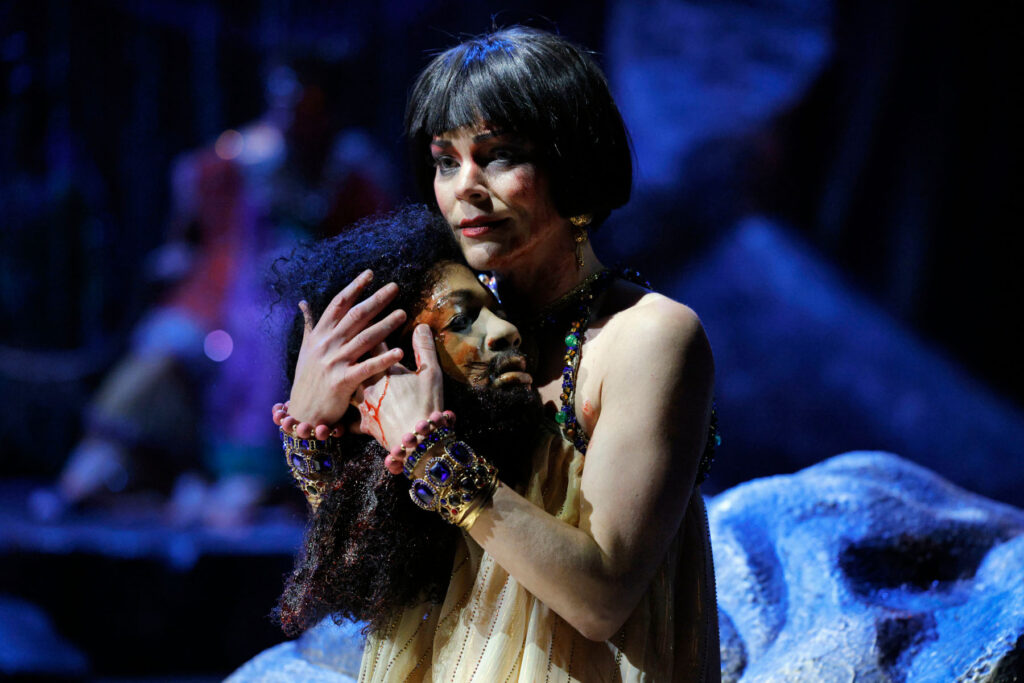
As the Soldiers, Alan Williams commanded attention for his vibrant bass, while fellow bass Sergio Martinez’s dark smooth declamations had a similar powerful presence. Robert Frazier’s Cappadocian was encompassed by his beautifully colored bass-baritone. Gabriella Turgeon’s brief moments as a Slave displayed her distinctive, pulsing soprano.
The complex extended ensemble of the quarrelsome Jews was superbly dispatched and well served by the tenors Will Upham with his full-bodied singing; Michael Deshield’s pleasantly throbbing tone; Shawn Roth, with his sizable youthful instrument; Sam Krausz, sporting a shining security; complemented by Matthew Soibelman’s imposing bass. Rounding out the cast were the two Nazarenes, highlighting Daniel Rich’s cavernous baritone and Zachary Taylor’s honeyed, pliant tenor.
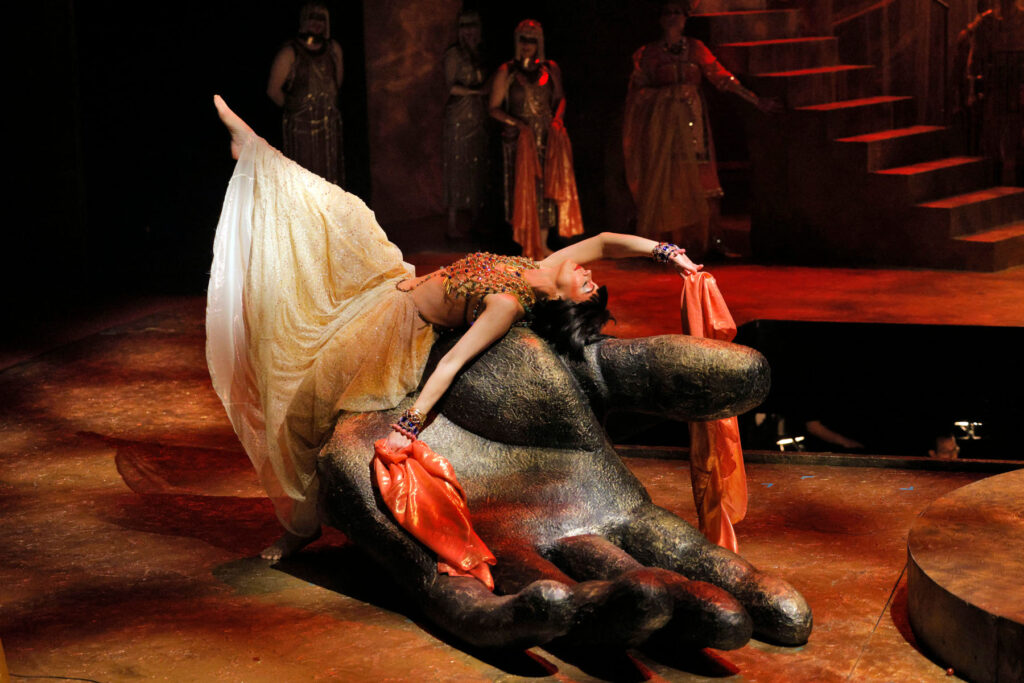
Salome’s instrumentation is a monster score, that challenges even established orchestras who play together all season long as a well-established ongoing ensemble. That this outstanding “summer festival” orchestra could coalesce into such a virtuosic band is owing to the towering talents of Music Director and Principal Conductor, David Neely. Presiding over Strauss’s approved “reduced” (but still large) orchestration, Maestro Neely exerted his customary stylistic authority, eliciting thrilling playing from his instrumentalists, while he partnered meticulously with his singers in flawless synchronization. Neely is a gifted musical chameleon, able to encompass a wide oeuvre of styles and repertoire. David Neely is the (not so) secret sauce that has helped elevate DMMO to the very front ranks of US operatic activity.
But opera should be a marriage of thrilling music and compelling theatre, and on that latter front the creative team also spectacularly delivered. Director Allison Polgorelc staged a wonderfully nuanced and varied production, taking full advantage of Steven C. Kemp’s visually arresting set design.
Simpson College’s Pote Theatre in the Blank Performing Arts Center is quite a unique operatic venue with a smallish proscenium stage spilling out onto a thrust area with the audience on three sides. The orchestra pit is sunken in the middle of the playing area, and there is a trap door that often features importantly in each production. Mr. Kemp made the obvious and effective decision to use the hydraulic trap door as the focal point of the cistern. That proved to be enormously effective as the prophet was lifted into view like an ascendant life force. When he was elevated still loftier for his final curse, he resembled no less than an avenging angel.
The rest of the atmospheric setting was spare but impactful. Upon entering the auditorium, there were two floor to ceiling swaths of mesh, gold hued curtains on both sides of the thrust. These were pulled upstage during the first bars to clear the sightlines but were cleverly returned for Salome’s dance. This allowed choreographer Jessica Lang to incorporate them into Salome’s movement, building from her initial teasing with individual veils, to having the temptress actually wrap herself in the sheer drapes, making her tantalizingly out of reach of the horned up Herod.
A very high unadorned staircase stood menacingly up right, and oversized black relics of antique statuary (a hand, a head, a plinth) plopped around the stage suggested decay, and provided levels on which actors could perch. These accoutrements were well used by Ms. Polgorelc, to create powerful stage pictures and define relationships. Upstage was sparsely covered by a shining beaded curtain, penetrated by actors and limbs from time to time for dramatic punctuation. The movable huge white outlined circle of light that was the hanging moon, not only swung and repositioned to haunting effect, it mirrored the large round wall of the cistern.
Connie Yun achieved another varied, brooding lighting design, not only washing the stage in lurid shadows containing accents of dramatic specials, but also amping up the dramatic excitement with the addition of hot colors that grew in intensity. Jacob A. Climer’s eye-popping costumes were a masterful cross of a Hollywood biblical epic and German religious Expressionism. The icing on this very rich Kuchen, is the sassy, brassy makeup and hair design by Brittany V.A. Rappise, that adds subtly distorted details which might be at home in an Otto Dix painting. Both Mr. Climer and Ms. Rappise are to be especially commended for making Ms. Gartland’s star entrance evocative of a young Natalie Wood, with her diaphanous diva gown and bobbed hair.
When Ms. Gartland was revealed for her curtain call, the roaring din of approval was probably heard in Dubuque. I have not experienced such an extended, vociferous ovation for a singer since the great Birgit Nilsson made her welcome return to the Metropolitan Opera in Elektra after some years of absence. And yes, Sara, your performance was in that league.
Bravi tutti! And thank you for an unforgettable Gesamtkunstwerk.
James Sohre
Salome
Music by Richard Strauss
Libretto by Hedwig Lachmann after Oscar Wilde
Cast and production staff:
Narraboth: Alex McKissick; Page of Herodias: Audrey Welsh; Soldiers: Alan Williams, Sergio Martinez; Jochanaan: Norman Garrett; A Cappadocian: Robert Frazier; Salome: Sara Gartland; A Slave: Gabrielle Turgeon; Herod Antipas: Chad Shelton; Herodias: Gwendolyn Jones; Jews: Will Upham, Michael Deshield, Shawn Roth, Sam Krausz, Matthew Soibelman; Nazarenes: Daniel Rich, Zachary Taylor; Conductor: David Neely; Stage Director: Alison Pogorelc; Scenic Designer: Steven C. Kemp; Costume Designer: Jacob A. Climer; Lighting Designer: Connie Yun; Wig and Makeup Designer: Brittany V.A. Rappise; Choreographer: Jessica Lang; Combat Director: Brian Robertson; Intimacy Coordinator: Stephanie Schneider
Top image: Sara Gartland as Salome performing the Dance of the Seven Veils.
All photos by Cory Weaver.